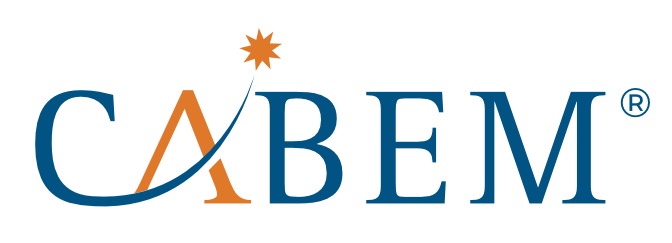Exploring the Relationship Between Competency Management and Credentialing
Competency Management and Credentialing are widely used practices in most industries today. Software applications are available to help manage these crucial processes so that they work seamlessly to ensure that all employees have the skills, knowledge, documentation, and training needed for success. Let’s take a closer look at each of these practices and how they are related, as well as how software applications, like CABEM’s Competency Manager, make both practices a reality in any industry.
What is Competency Management?
Competency Management is a formal organizational approach that defines the skills, knowledge, and behaviors needed in a business. . Competencies can be technical or behavioral. Technical competencies reflect the knowledge needed in a job, and behavioral competencies reflect how this knowledge is applied. These talents that are needed to meet the goals of a particular business are then used to forecast individual needs, determine training goals, and measure progress towards those goals. Competencies are acquired, developed, and demonstrated in various ways Some examples of how competencies are acquired and developed include, experiential learning, online training courses, instructor-led training, and on-the-job training. Demonstration methods can vary as well and may employ tests or quizzes as knowledge checks, assessments during field observations, or documentation as proof of an earned certification. In some cases, such as mentoring, the acquisition, development, and demonstration of competency is an ongoing, collaborative process that employs a combination of any or all of the skill acquisition and validation practices described above.
There are so many benefits to Competency Management. It can identify which skills a person needs to perform well in order to succeed in their specific role. This helps Human Resources better identify the candidates that will succeed in that role. Competency Management makes training for employees easier. Employees who receive clear, defined instructions of their job parameters will do better in their roles. The ability to evaluate skills, identify skills that are lacking, and improve productivity. Employees can be provided the training they need, which in turn will lead to decreased errors. Valuable skills and knowledge stay within an organization with clearly defined core competencies. This allows organizations to gain a better understanding of what skills are needed to grow and succeed in the future.
What is Credentialing?
Credentialing is the formal process of determining the qualifications of professionals and assessing their background and legitimacy. A credential is an award or accreditation given to an individual to verify a specific qualification or competence. Some examples of credentials are certifications, degrees, diplomas, licenses, and certificates. Credentialing is important in any business as it helps reduce liability, achieve regulatory compliance, and retain talent by proving competency.
Credentialing is a valuable task in many industries in which there are legal requirements in verifying employees have the required skills and experience to do their job. It is imperative that organizations manage and track this data efficiently and effectively. This is most common in healthcare, law enforcement, construction, finance, and manufacturing, but is used in many other industries as well.
Credentialing utilizes an established series of guidelines to ensure that employees undergo stringent scrutiny regarding their qualifications and training. In healthcare, credentials verify that patients receive the highest level of care from healthcare professionals. Credentialing also allows businesses to make sure all employees are held to the same standard.
What is the connection between competency models and credentialing?
Competency models are a useful resource for developing the knowledge, skill, ability requirements for a credential. The model provides the basis for identifying and prioritizing content prior to developing specific learning objectives or performance standards in an occupation or industry. Models are a resource for developing credentials. A competency model can also be used to evaluate an existing credential to determine if the award actually covers all the competencies required for successful performance.
The immediate goal of credentialing is to ensure that professionals have the minimum skills and knowledge to do the job, with the relevant documentation to prove it. The much broader goal is to show the public that your profession is trustworthy and competent. Competency Management increases the credibility of a profession through the use of credentialing. Credentialing without a Competency Model in place is similar to building a house without the drawings and floor plans in place.
What are the benefits of a software-based solution to manage both practices?
Software solutions help businesses to search, analyze and store competency-related data. Dashboards provide brief overviews of information, and search functions help users determine who has particular skills and knowledge. Software facilitates collaboration and knowledge sharing across departments since it is an enterprise system installed on a corporate server or through the cloud.
In any organization, everyone has many tasks that they need to accomplish, and desired skills needed to be able to do so competently. Keeping track of paperwork, as well as managing ongoing and expired credentials and upcoming training can be a tedious process. As credentialing requirements grow in intensity and complexity, a system that allows you to track, renew, and monitor the necessary credentials of your team is needed. CABEM’s Competency Manager helps bridge this gap, to compile and create competencies in a logical way that institutionalizes enterprise employee knowledge.
Competency Manager is formulated from the top down and addresses the needs of the entire organization. It allows organizations to create competencies and map them to departments, roles, locations, and other segments across the enterprise. Additionally, it allows for all day-to-day learning, whether experiential, mentorship or peer-to-peer, to be captured and documented formally within a software system.
-
CABEM works closely with customers to assist them in achieving their organizational goals by configuring a unique instance of the application according to each organization’s own competency model, framework, and credentialing needs.
Contact us today to learn how our competency management software can help you prove competency within your organization. If you would like to learn more, please visit our website and schedule a call today.

